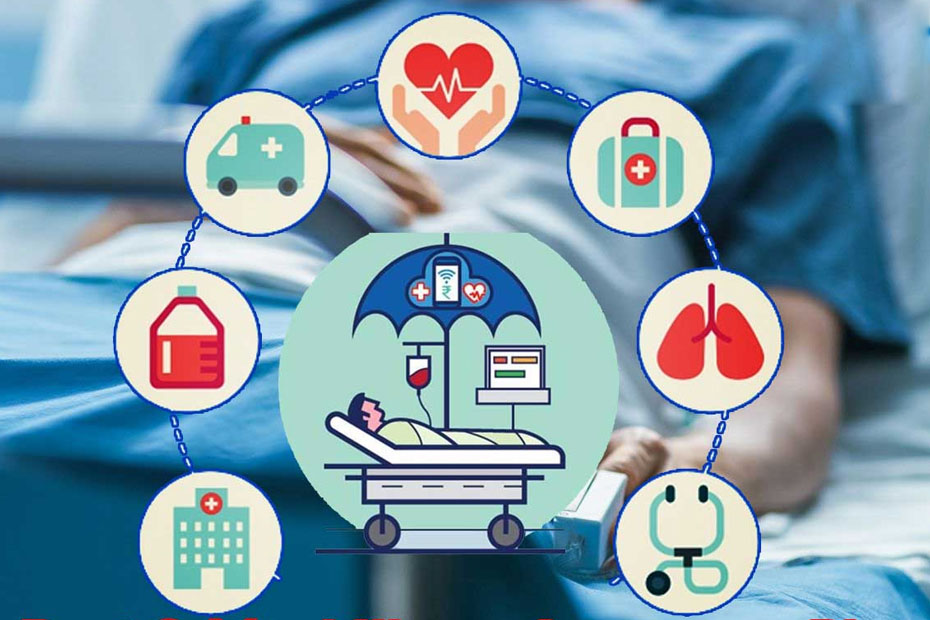In today’s fast-paced world, everyone wants their salaries and assets to grow. In the same way that bikers dream of owning four-wheelers, guys with four-wheelers may dream of travelling to exotic places. They forget one simple mantra during this rush for things; your health is the greatest wealth you can have. Ironically, when your health is in danger, you require wealth. In this situation, you can benefit from Critical Illness Plans and cancer insurance policies.
A common path
Both health insurance and critical illness insurance have proven to be beneficial to the general public. Although they have the same goal, they follow two diversified paths only to merge at one point. The need for a health plan cannot be overstated. Critical Illness Plans are the same. Consider purchasing the cancer insurance policy as an add-on to your Health Plan, which would be a cheaper option if your plan allows it. There is no more suitable way to introduce a new saying than by doing this: Wealth indeed supplements health. A bite-sized Pocket Insurance plan can provide protection through an insurance policy for millennials, who are often hesitant to pay for full insurance coverage.
Highlights:
- Small premiums and adequate coverage – Insurance within your reach
- The convenience of applying online and paying online
- Settlement of claims is simple
In what ways is critical illness insurance different from regular health insurance?
Critical Illness Riders (CIR) and Health Insurance plans are intelligently positioned in the Life Style market and cannot be purchased as medical insurance. Medical expenses incurred on admission to hospitals are not covered by either of these policies. They should not be confused with medical insurance, which reimburses medical expenses upon discharge from a network hospital or provides a cashless facility upon admission.
Hospitals are not covered by health insurance or CIR. Their terms and conditions state that in case of hospitalisation, they reimburse the policyholder directly without consulting the hospital. In most cases, hospitals do not require receipts or bills. It may be necessary to obtain a discharge summary. It is sufficient for the claim to be honoured that the policyholder was hospitalised.
There is no difference between hospital bills and claims under Health and CIR. As a result, the company is more concerned with the Life Style area since it is concerned with empowering policy holders through liquidity. There are a lot of exclusions associated with these Lifestyle products, however. You can spend a lot of time trying to understand medical jargon and exclusions. It is important to note that misunderstanding medical terminology may lead to being on the wrong side of claims.
The products they offer, however, are quite popular and smartly enhance your insurance portfolio. No matter how much the insurance advisor tries to make the sale, you should never choose these products over medical insurance. Medical insurance is a necessity. Medical expenses incurred in the hospital are covered solely by this insurance.
Expenses beyond those are considered lifestyle expenses. Here is where health plans come into play. It is possible to claim from both policies. A hospital insurance policy addresses lifestyle by creating liquidity for hospital expenses. Medical insurance pays for hospital expenses.
The difference explained
Here’s an example of an unfortunate accident that happened to a biker. The man comes from a humble background and cannot afford to pay Rs 5 lac for his knee to be fitted back into place. Take a look at another scenario where this man insured his capital through a health care plan. Depending on the type of plan he chooses, the Health Plan would ensure this man is treated for his knee at a minimal or no cost to him. If you are injured or become ill, Health Plans have your back.
There is no particular definition of what it means to fall ill. A person suffering from a cold and another suffering from cancer are both considered ill. Cancer, kidney failure, heart attacks, paralysis, and other life-threatening illnesses are considered critical illnesses. There is no comparison between the Critical Illness Plan and the former plan.
The hospital insurance policy covers hospital bills. In most cases, health insurance companies pay directly to hospitals or reimburse them for treatment costs. After detecting any critical illness, Critical Illness Plans provide you with a lump sum of insurance money. There is a survival period clause in most Critical Illness Plans. A survival period is a period during which the insured must survive after being diagnosed with a critical illness (14-30 days). A premium benefit will be paid to the insured after this time period.
When an insured is ill, and on the road to recovery, Critical Illness Plans could act as a secondary income source. Additionally, one does not have to pay any taxes on the amount received. As a result, the cost of the premium remains the same, so you don’t have to calculate new premium rates every year and their interest.





More Stories
13 Health Benefits of Weightlifting
What Does Acupuncture Help With?
Modvigil 200mg Smart Pills